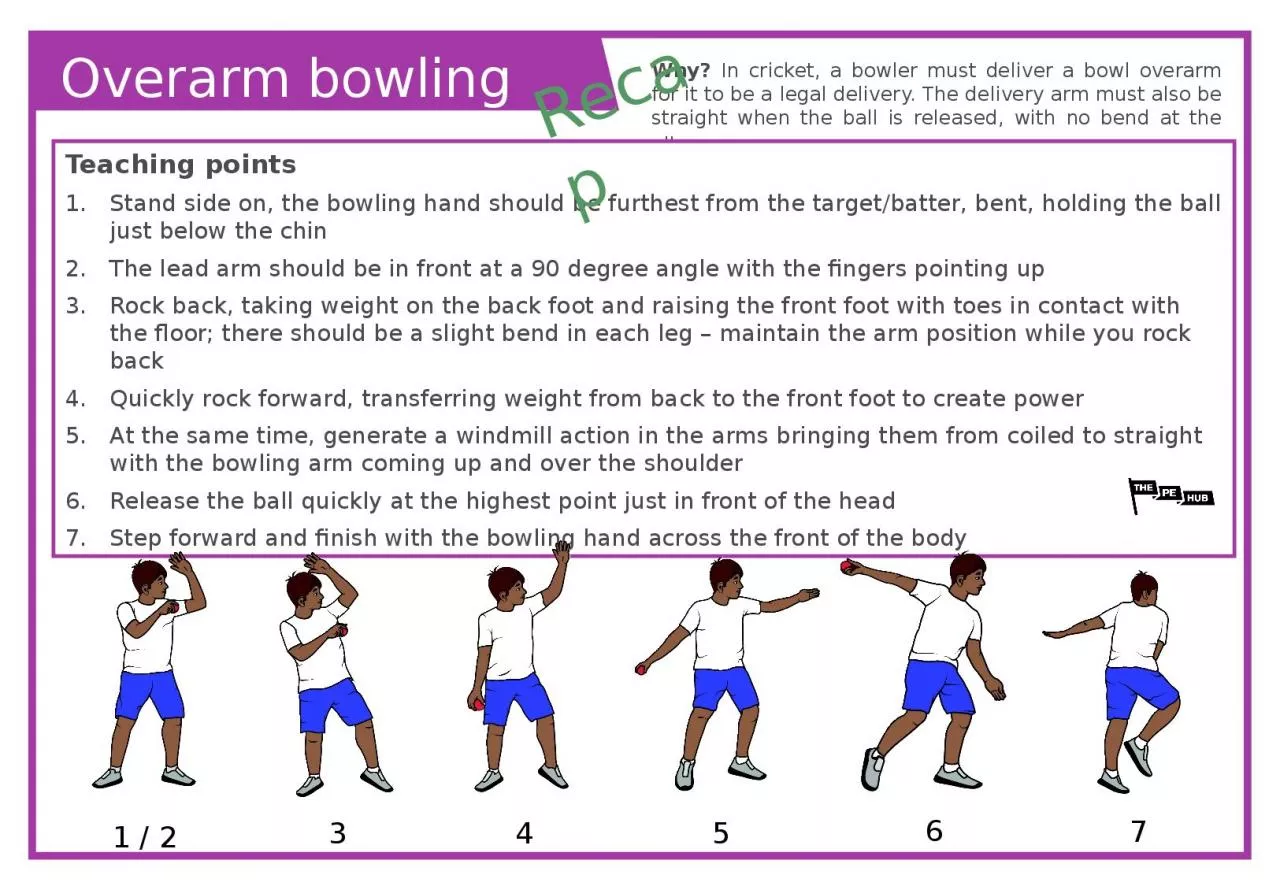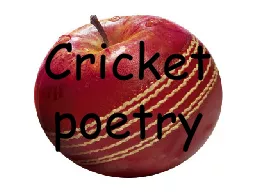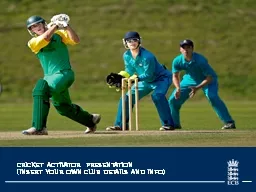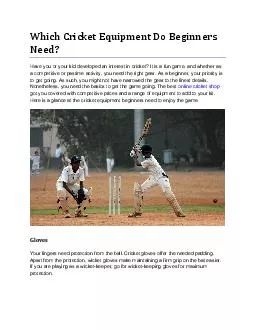PPT-Why? In cricket, a bowler must deliver a bowl overarm for it to be a legal delivery.
Author : harmony | Published Date : 2024-03-15
Overarm bowling Teaching points Stand side on the bowling hand should be furthest from the targetbatter bent holding the ball just below the chin The lead arm should
Presentation Embed Code
Download Presentation
Download Presentation The PPT/PDF document "Why? In cricket, a bowler must deliver ..." is the property of its rightful owner. Permission is granted to download and print the materials on this website for personal, non-commercial use only, and to display it on your personal computer provided you do not modify the materials and that you retain all copyright notices contained in the materials. By downloading content from our website, you accept the terms of this agreement.
Why? In cricket, a bowler must deliver a bowl overarm for it to be a legal delivery.: Transcript
Download Rules Of Document
"Why? In cricket, a bowler must deliver a bowl overarm for it to be a legal delivery."The content belongs to its owner. You may download and print it for personal use, without modification, and keep all copyright notices. By downloading, you agree to these terms.
Related Documents














